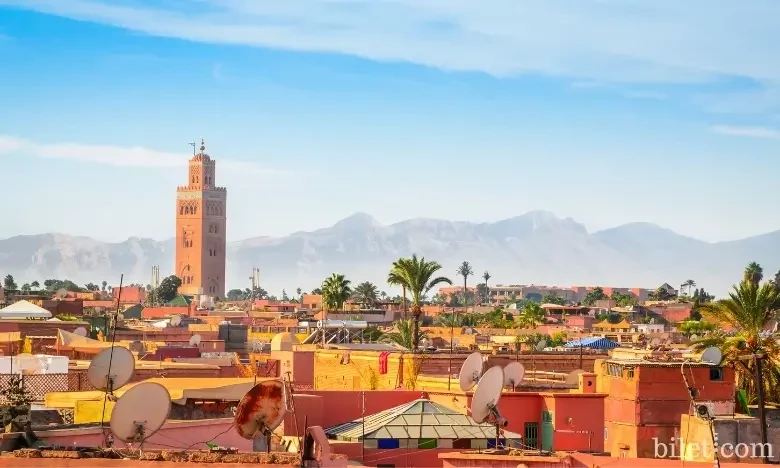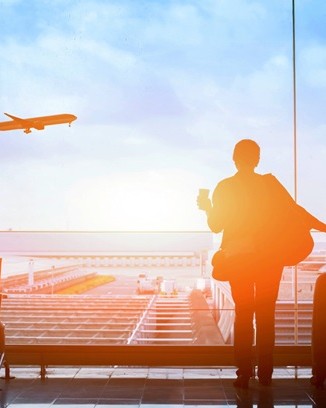In this article; you will find where Morocco is, what kind of culture it has, places to visit city by city, historical structures and all the details you need to know before planning your vacation. If you need a nice travel route, it will be enough to visit the following Moroccan cities in order. If you are ready for this journey of discovery, from the exotic atmosphere of Marrakech to the historical streets of Fez, from the modern face of Casablanca to the blue dream of Chefchaouen, let's start!
Where is Morocco, what kind of place is it?
Located in the west of North Africa, Morocco is one of the few countries that has coasts on both the Atlantic Ocean and the Mediterranean. Thanks to this unique location, it has been a transition point for many civilizations throughout history, blending both Arab and Berber cultures.With the ocean waves stretching out to the west, the endless Sahara Desert to the east, the warm breeze of the Mediterranean to the north and the Atlas Mountains rising to the south, Morocco offers an exotic geography where nature, history and culture intertwine. Morocco also promises a journey to another time with its vibrant bazaars, colorful spices, handcrafted products and mysterious streets.
Economic and Social Structure of Morocco
Life in Morocco offers an interesting balance between the traditional and the modern. While a European-like social atmosphere is felt in major cities such as Marrakesh, Casablanca and Rabat, a simple and traditional life still prevails in rural areas. Tourism is one of the important building blocks of the country's economy.Moroccans are known for their hospitality; French and Arabic are the most common languages, although English is also becoming more common among the younger population. The country's multicultural structure allows for both Muslim and Berber traditions to be found.
Things You Need to Know Before Going to Morocco
- Visa : Turkish citizens can travel visa-free for up to 90 days.
- When to go: Spring (April-May) and autumn (September-October) are the ideal times.
- Is it safe for female travelers?: Generally safe, but caution in clothing selection is recommended.
- Internet and lines : Local SIM cards (e.g. Orange or Inwi) are affordable and widely available.
- Is English valid?: It is possible to communicate at a basic level in touristic areas.
- Vegan/vegetarian food?: Traditional cuisine is meat-based, but couscous with vegetables, salads and legumes are common.
Casablanca
Casablanca, the largest city in Morocco, is a dynamic city that blends traditional Moroccan culture with modern metropolitan life. Casablanca, an important port city on the Atlantic coast, is also known as the economic center of Morocco.Unlike the exotic and traditional atmosphere of Marrakech, a more cosmopolitan, European and contemporary atmosphere is felt here. With its wide boulevards, Art Deco architecture, luxury hotels and shopping malls, it is an ideal stop for both business and cultural and artistic travelers.
Hassan II Mosque
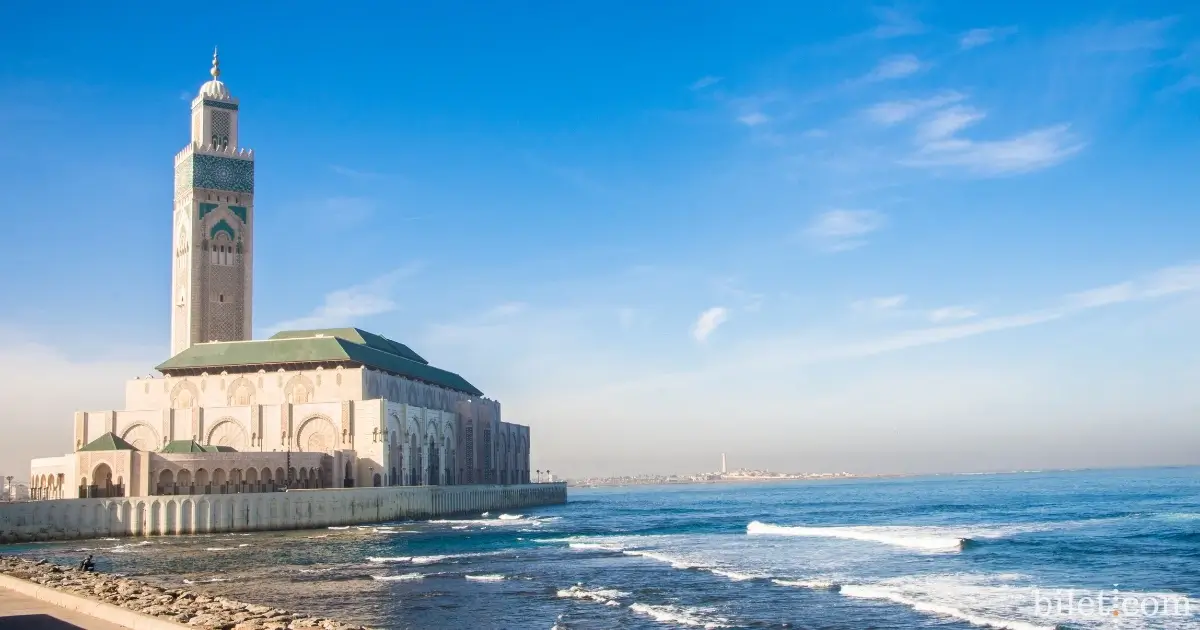
The Hassan II Mosque, Casablanca’s most iconic structure, is a source of pride for Morocco. It has the world’s tallest minaret at 210 meters. Part of the structure’s floor is made of glass, allowing you to see the sea from underneath. It is one of the few mosques open to tourists, making it a must-see for visitors. However, we will leave the entrance fee to your discretion.
La Corniche
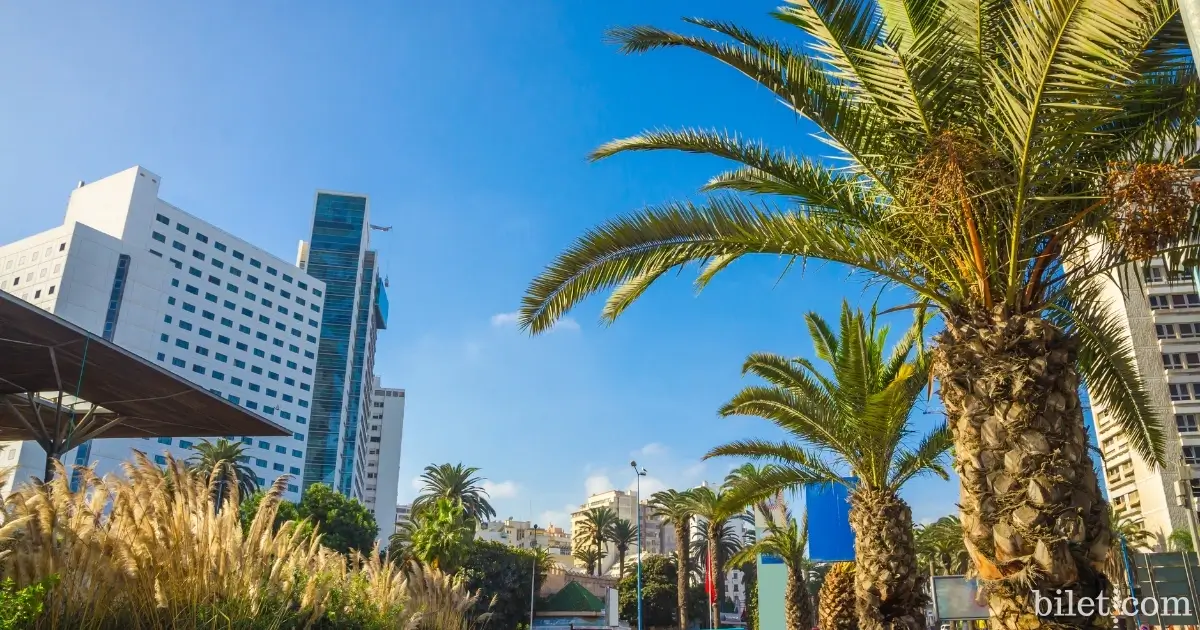
The best place to get some sea air and watch the sunset in Casablanca is La Corniche. This coastline, full of palm-lined walkways, ocean-view cafes, luxury beach clubs and modern restaurants, is lively both day and night. Especially on weekends, this area is where locals spend their time, and it is very enjoyable to have a coffee or eat seafood by the sea. It also offers an ideal environment for romantic walks and photo shoots.
Rick's Cafe

In this city, which became world famous with the legendary 1942 film Casablanca, the iconic location where the film took place, Rick's Café, has been rebuilt exactly. With its arched windows, old piano and elegant decoration, it offers a nostalgic experience for film enthusiasts.
Marrakech
Marrakesh is one of the most fascinating and exotic cities in Morocco. Also known as the “Red City” due to its red buildings, Marrakesh is a place where the splendor of the past and modern life intertwine. Located at the foothills of the Atlas Mountains, this city is a center of history, culture, art and shopping. One of the first stops for most travelers visiting Morocco, Marrakesh takes on a completely different atmosphere both during the day and at night.Jemaa el-Fna Square
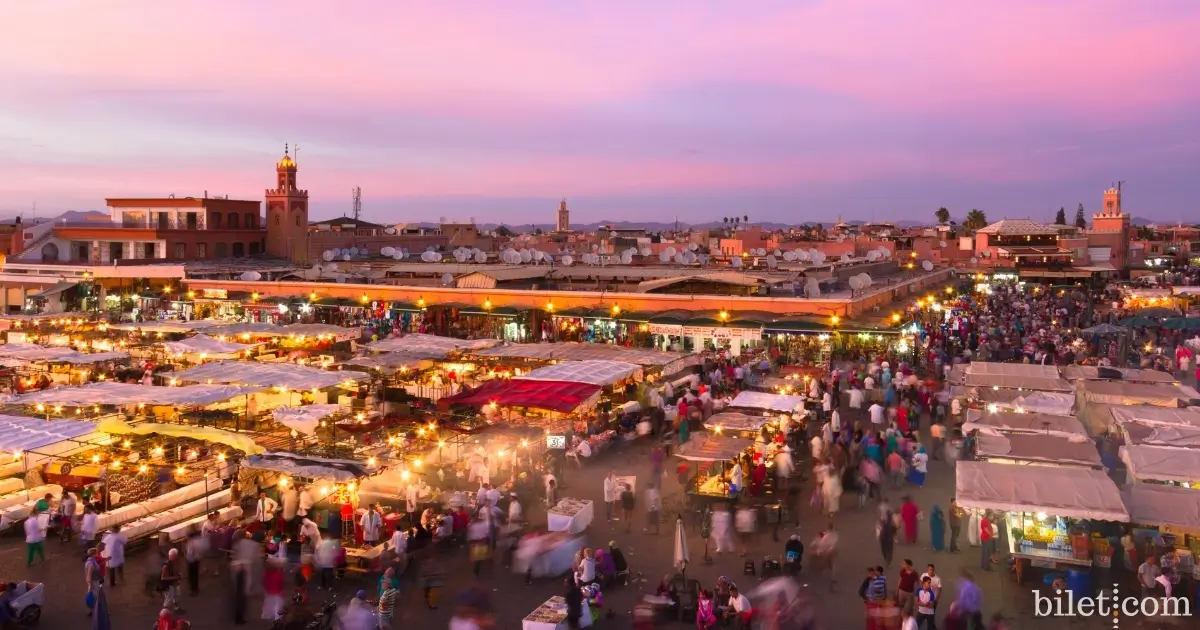
Jemaa el-Fna Square, declared an Intangible Cultural Heritage by UNESCO, is the place that best reflects the spirit of Marrakesh. Filled with snake charmers, itinerant spice vendors, storytellers, acrobats and street artists, this square turns into an open-air theater, especially after sunset.
Majorelle Garden
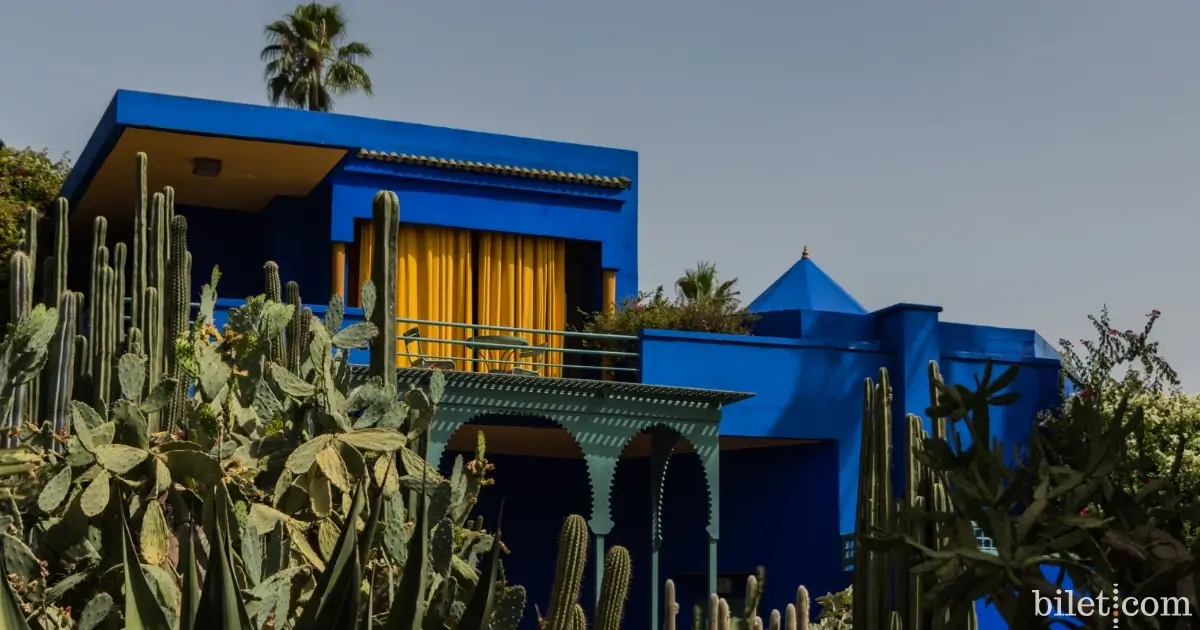
Restored by the famous French fashion designer Yves Saint Laurent, the Majorelle Garden is one of the most peaceful places in Marrakech. It offers a visual feast with its vibrant blue structures, cactus collection, bamboo trees and water pools. It is ideal for travelers who want to escape the chaos of the city and take a short breath.
Koutoubia Mosque
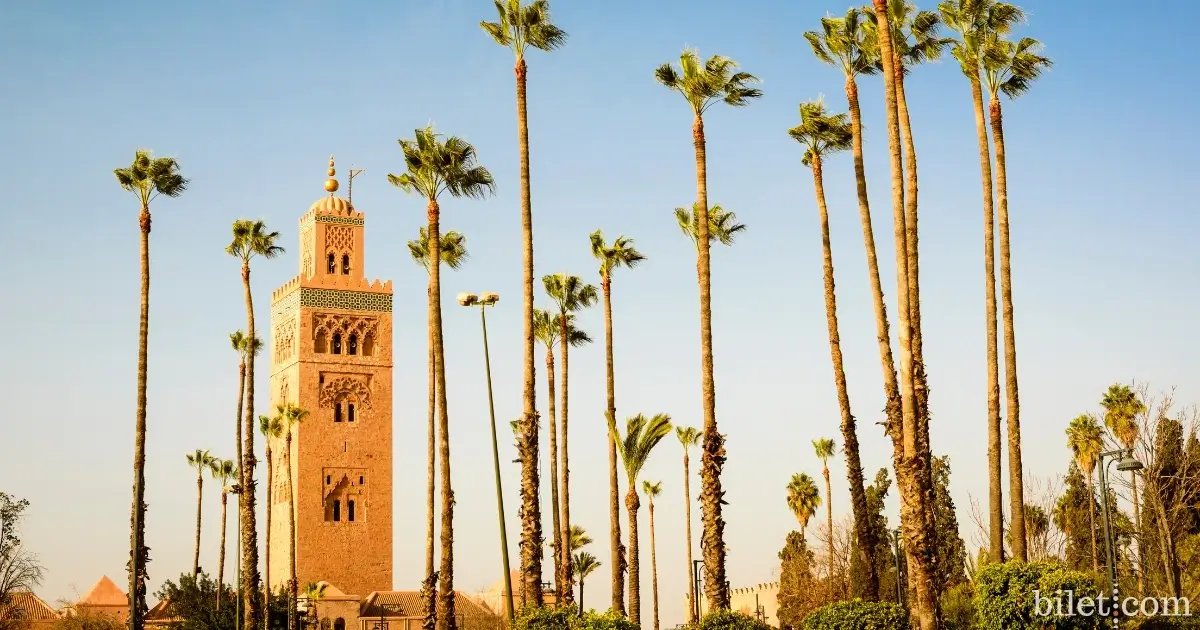
Built in the 14th century, the Koutoubia Mosque is one of the most impressive structures that shape the skyline of Marrakesh. With its 77-meter minaret, it can be seen from almost anywhere in the city. Although tourists cannot enter the mosque, it is a must-see stop with its surrounding gardens and architecture.
Ben Youssef Madrasa
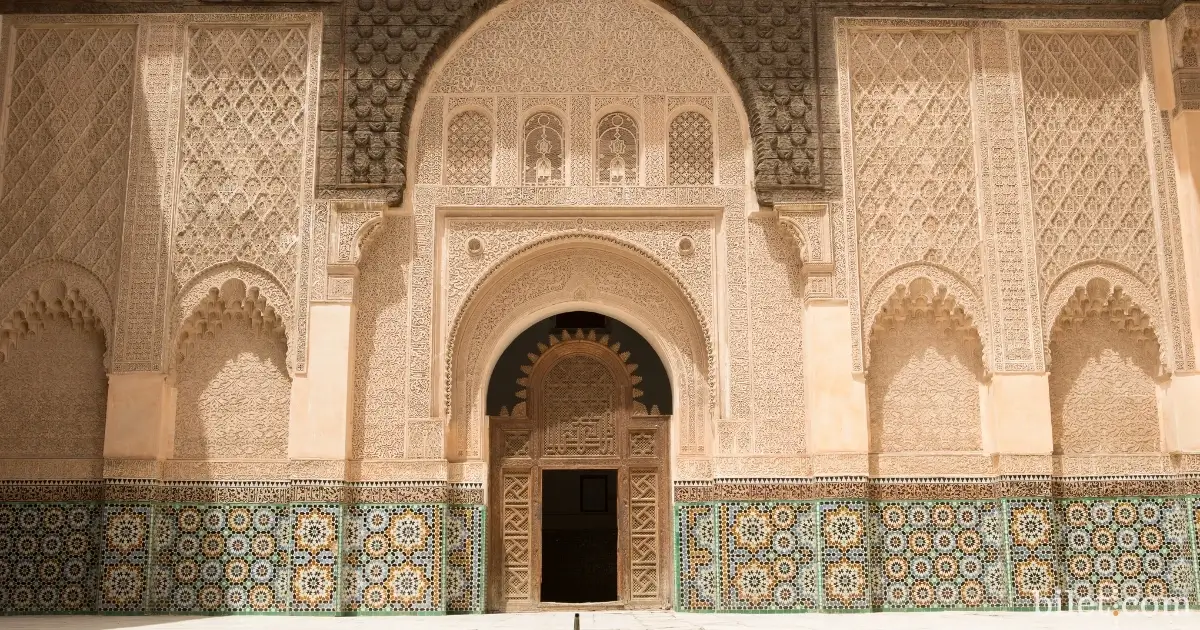
One of the most impressive buildings in Marrakech, the Ben Youssef Madrasa is a 14th-century Islamic school. It has a striking architecture with its marble decorations in the courtyard, traditional mosaic stonework called zellige and wood carvings. The small student rooms and quiet atmosphere inside offer a mystical experience that takes visitors back in time.
Fez
Located in the north of Morocco and one of the oldest cities in the country, Fez is like an open-air museum living in the past. We can even say that it is one of the most fascinating cities in Morocco. Founded in the 9th century, this historical city is considered the cultural capital of Morocco, and it was the capital of Morocco for many years. Fez, where Arab and Berber cultures intertwine, promises its visitors a journey through time with its narrow streets, bazaars famous for their handmade products and traditional architecture.Fez al-Bali
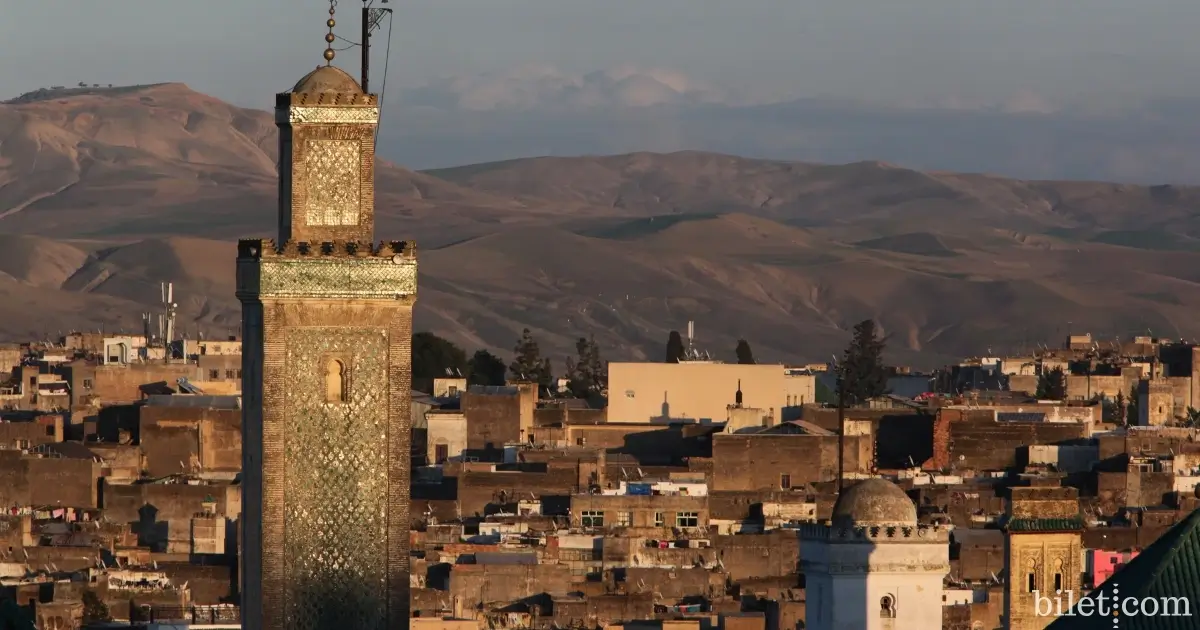
Listed as a UNESCO World Heritage Site, Fes el-Bali is one of the world’s largest car-free medieval cities. Its labyrinthine streets, craft workshops, and the smell of spices and leather will fascinate you. It is also home to the world’s oldest university, Al Quaraouiyine University.
Bou Inania Madrasa
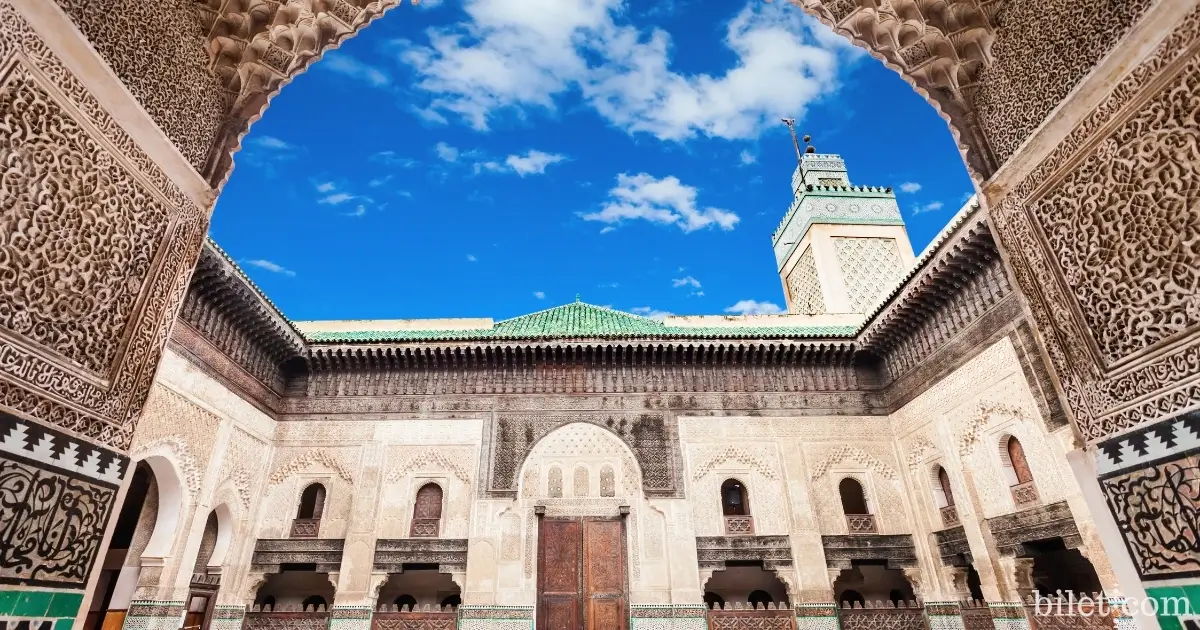
Built in the 14th century, Bou Inania Madrasa is one of the most elegant examples of Moroccan Islamic architecture. The interior is mesmerizing with its fine mosaic decorations, wood carvings, and stonework. One of the few madrassas open to visitors, Bou Inania is a must-see for both history and architecture enthusiasts.
Leather Tanneries
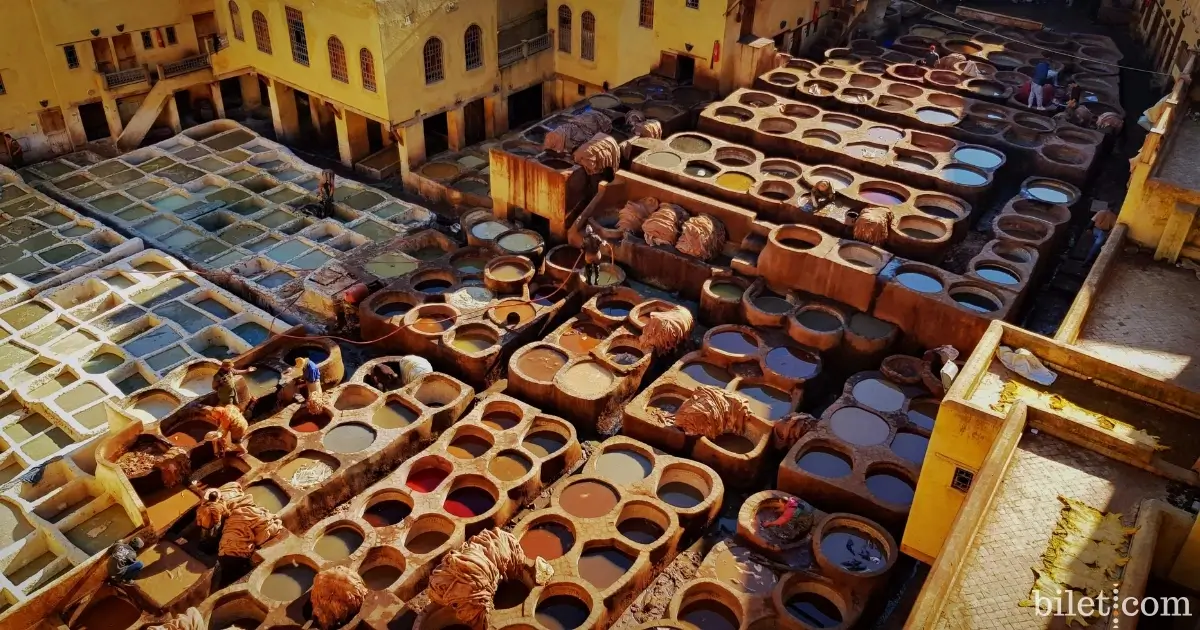
One of the most iconic and unusual spots in Fez, the Chouara Tannery showcases traditional leatherworking methods that have remained unchanged for hundreds of years. Dotted with colourful dye pools, this area offers an impressive and slightly pungent experience. The view from the terrace provides a unique view, especially for photographers. It is also possible to buy handmade leather goods directly from the maker — don’t forget to bargain!
Al-Qarawiyyin University
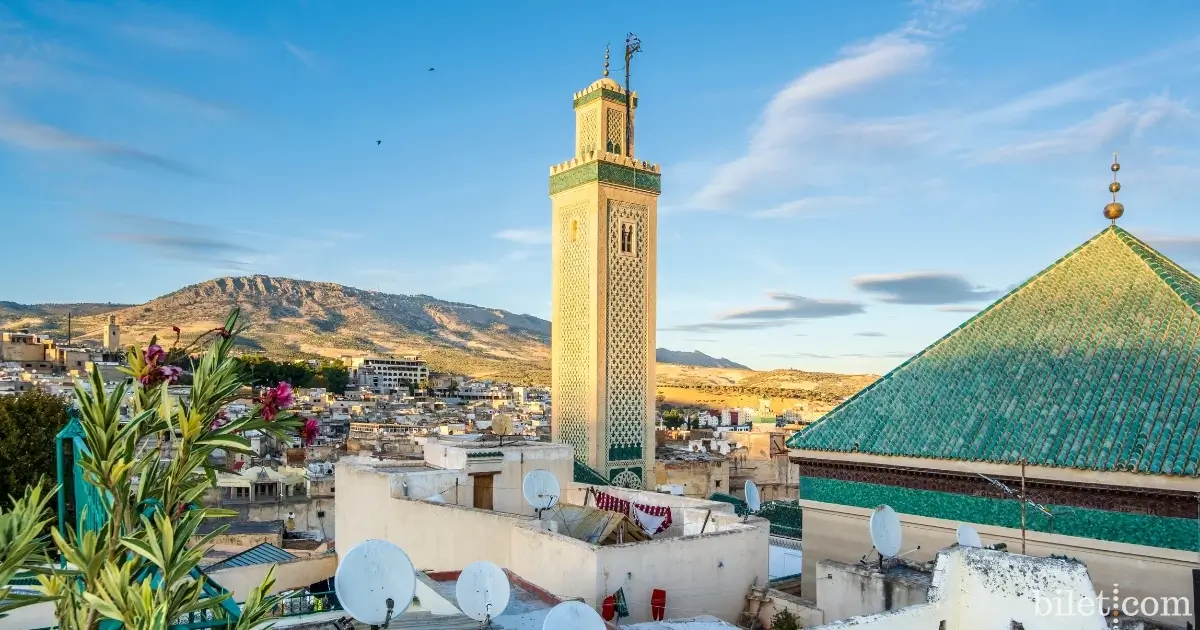
Founded in 859 by Fatima al-Fihri, this university is recognized by UNESCO and the Guinness Book of World Records as the oldest university still providing education in the world.
This university, which has hosted the leading scholars of the Islamic world for centuries, is a fascinating structure today with both its architecture and history.
Meknes
One of the least explored yet impressive cities in Morocco, Meknes is a royal city steeped in history and grandeur, having served as the capital of the Alaouite Dynasty in the past. Far from the liveliness of Marrakesh and the chaos of Fez; with a calmer, more authentic and magnificent atmosphere, Meknes is on the UNESCO World Heritage List. The city is a true treasure trove for history lovers with its impressive walls, magnificent gates, madrasahs and green nature.Bab Mansour Gate
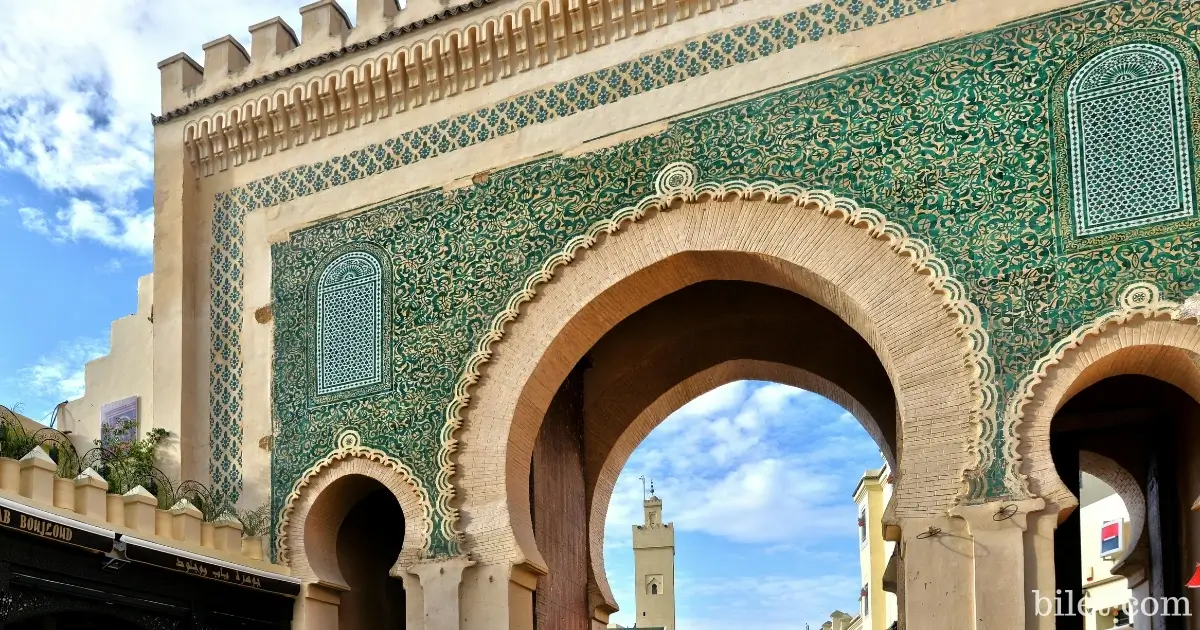
The most iconic landmark of Meknes, Bab Mansour dazzles with its grandiose structure and detailed mosaics. Completed in 1732, this gate is considered one of the most magnificent examples of Islamic architecture and Moroccan art. Located at the entrance to the city, this structure is not only an ideal spot for those who want to take photos, but also the first stop where you will step into the historical texture of Meknes.
Sahrij Swani Pool
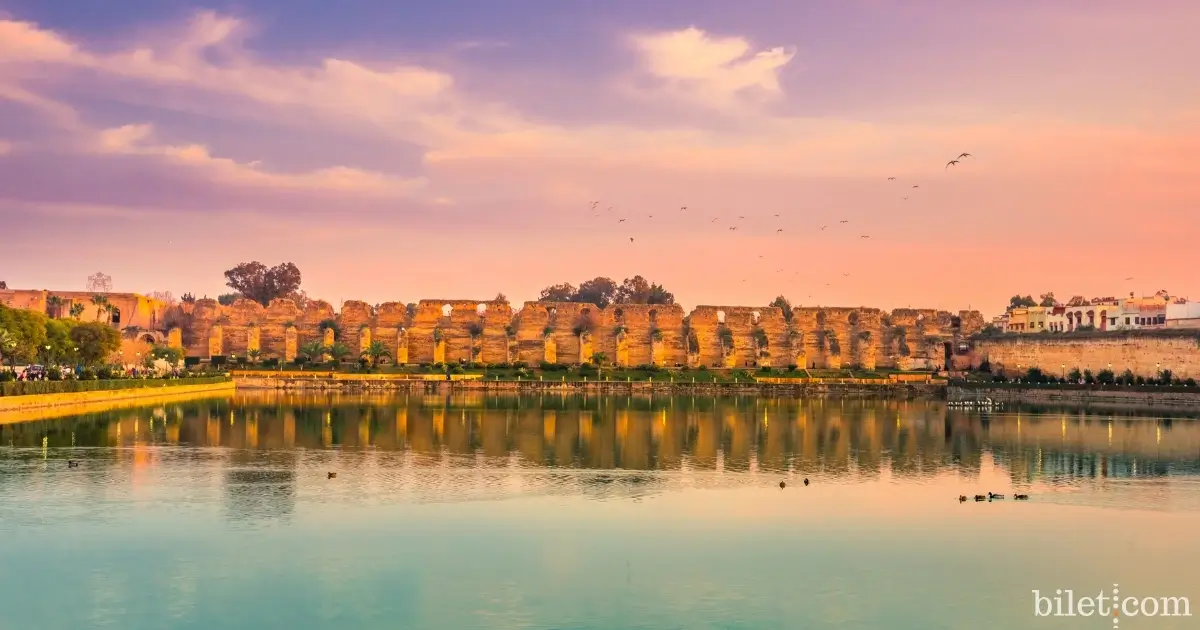
Located a few minutes’ walk from Bab Mansour, Sahrij Swani offers a peaceful atmosphere with its historical water pools and surrounding walking paths. This large pool, which used to meet the water needs of horses and soldiers, is now preferred as a historical walking and resting area. Time slows down in this environment full of silence, reflections of water and traces of the past.
Volubilis Ancient City
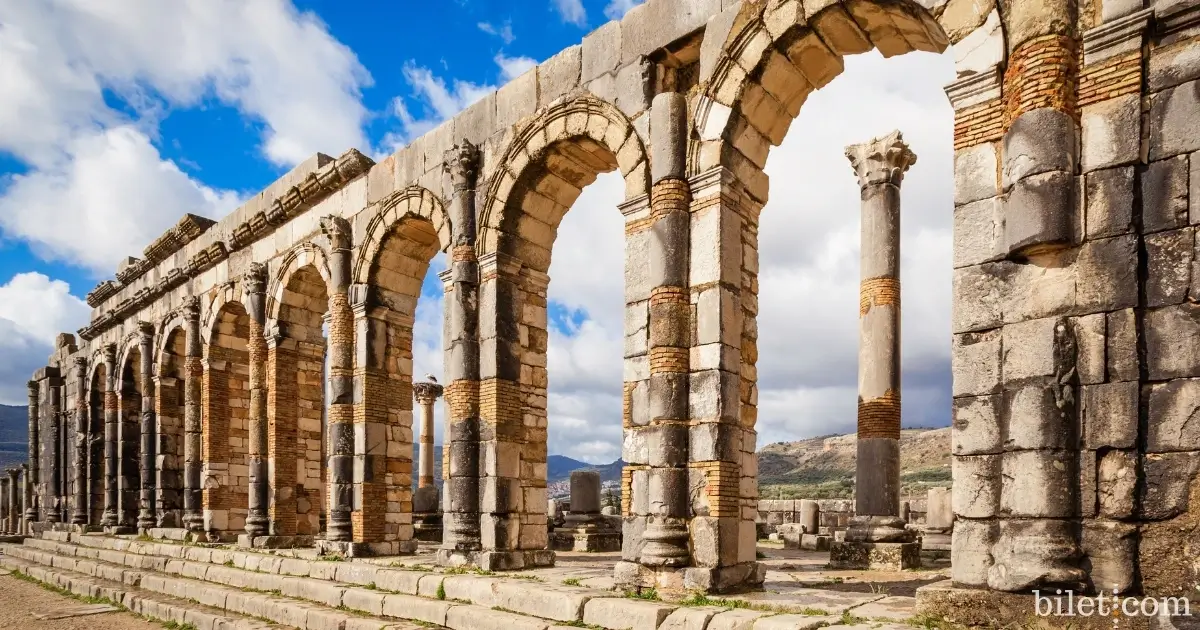
Located approximately 30 km from Meknes, Volubilis is one of the most important archaeological sites in Morocco dating back to the Roman period. Dating back to the 3rd century AD, you will experience history step by step as you walk among the columns, mosaics and temple ruins in this ancient city. Volubilis offers an unforgettable experience, especially for history and archaeology enthusiasts, and is a must for a trip to Meknes.
Chefchaouen – Blue City
A hidden gem in the foothills of the Rif Mountains in northwest Morocco, Chefchaouen is one of the country’s most charming cities, with its pastel-painted houses and peaceful atmosphere. It’s called the “Blue City” because almost all of its buildings are painted in various shades of blue.This unique view attracts the attention of both photography enthusiasts and travelers looking for a peaceful getaway. Offering a calmer, more authentic and more natural environment compared to other Moroccan cities, Chefchaouen gives visitors the feeling of walking in a fairytale land.
Blue Streets
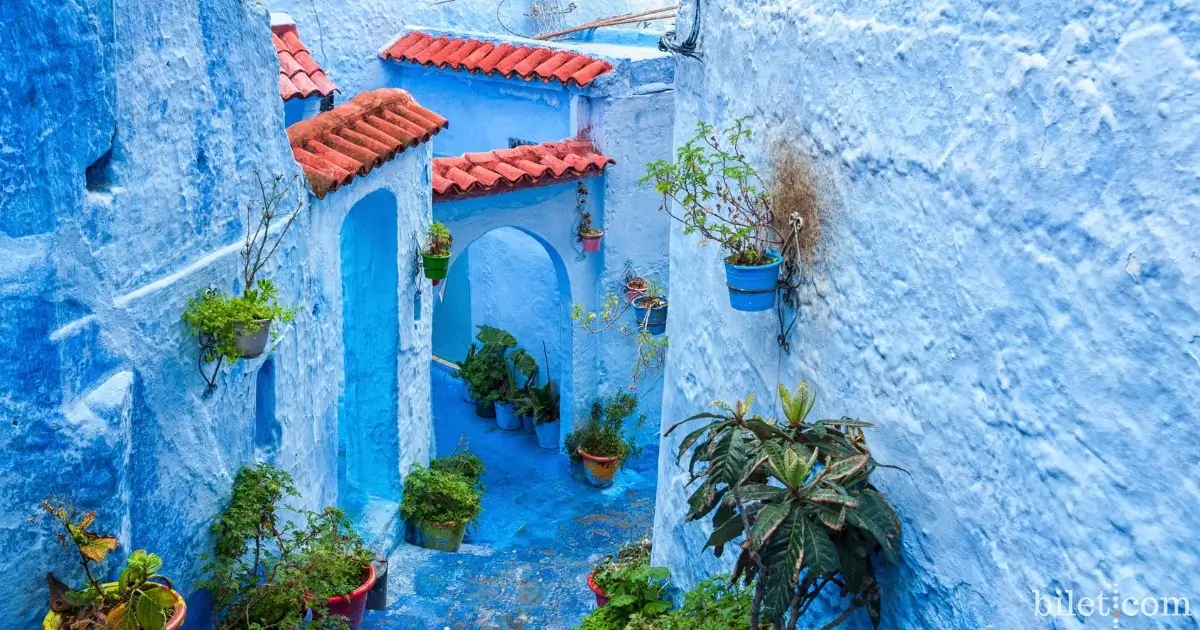
The most famous feature of Chefchaouen is undoubtedly its labyrinthine blue streets. The blue tones you encounter at every corner give the city a mystical and calming atmosphere. The doors, stairs and walls of the houses are painted in different tones such as light blue, cobalt and turquoise. Some say these colors are to keep mosquitoes away, while others say they are a tradition left over from Jewish culture.
BONUS: The Little Known Face of Morocco
If you want to discover the lesser-known riches of Morocco instead of the places that everyone visits, if you are bored of the places that everyone visits, it would be beneficial to turn your route to these places. In our opinion, every country has places worth seeing despite being in a corner. If you have plenty of time in Morocco, we definitely recommend visiting these cities, you won’t regret it.Essaouira
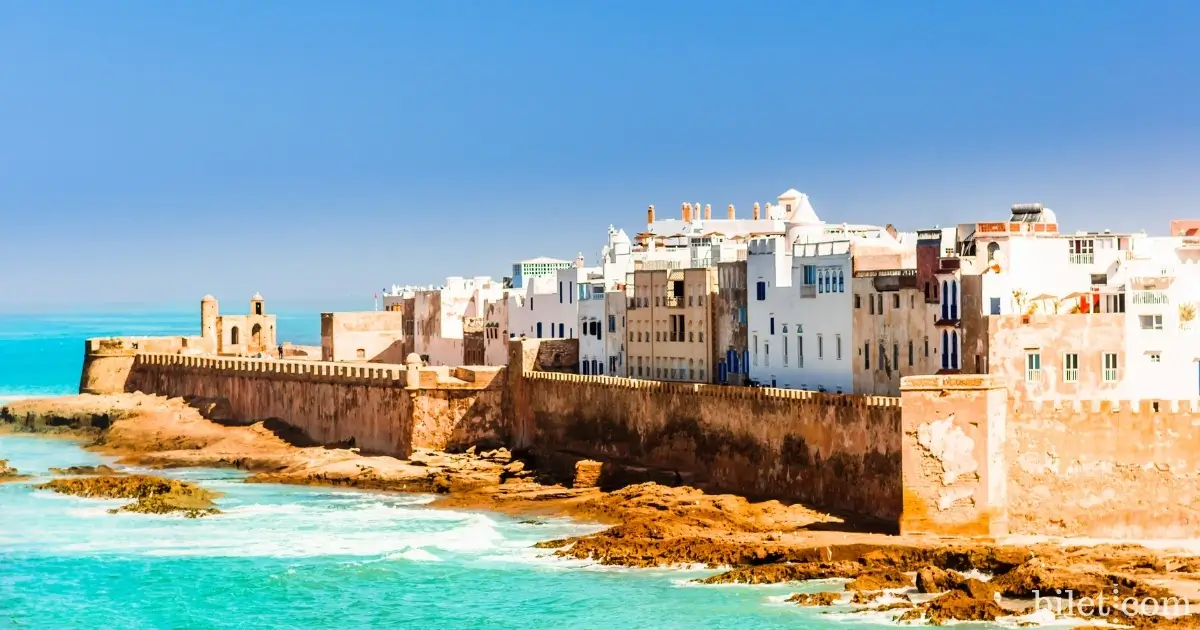
A peaceful port city on the west coast of Morocco, shaped by the salty winds of the Atlantic Ocean, Essaouira is an oasis for those looking to escape the chaos of crowded cities. A favorite stop for windsurfers, artists and bohemian travelers, the city stands out with its calm atmosphere, colonial architecture and art-filled streets.
Essaouira, which has a medina on the UNESCO World Heritage list, is one of the most characteristic coastal cities of Morocco with both its historical texture and free-spirited atmosphere.
Merzouga & Erg Chebbi
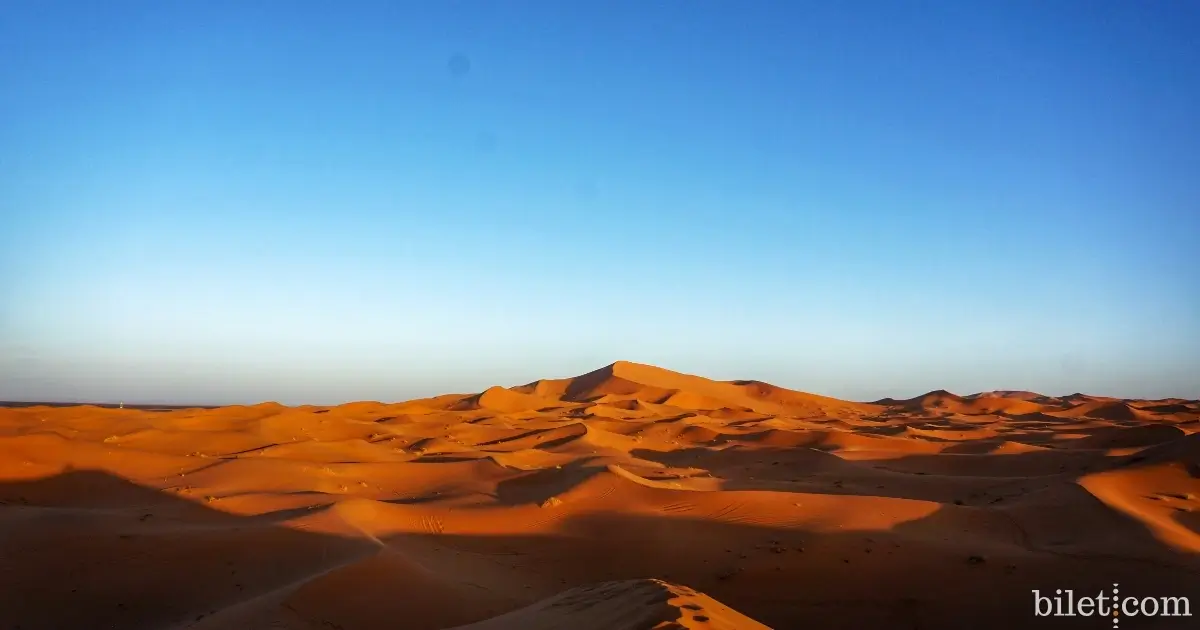
When you think of Morocco, one of the first images that comes to mind is of course the vast Sahara Desert. The places where you can experience this desert experience in the most impressive way are Merzouga and the Erg Chebbi dunes right next to it. Let's take a look at what you can experience in the desert:
- One of the most unforgettable experiences in Merzouga is a sunset tour on camelback to the Erg Chebbi dunes.
- Spending the night in the desert is an experience not to be missed in Merzouga.
- If you are looking for adventure in the Sahara, 4x4 safari tours or sand boarding activities starting from Merzouga are just for you.
Ait Benhaddou
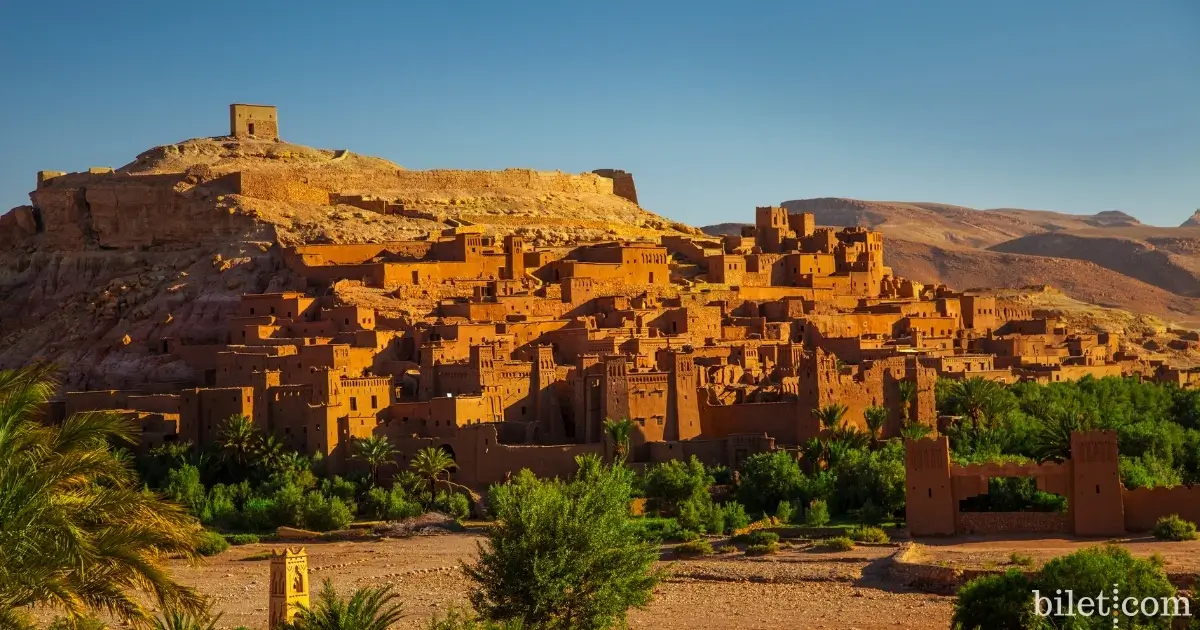
If you are traveling in Morocco by car or have time, we definitely recommend you to see this surreal town in person. Air Benhaddou, where many movies and series such as Game of Thrones, Gladiator, the Mommy were shot, is one of the most impressive historical structures in Morocco.
This ancient ksar (traditional desert fortress), listed on the UNESCO World Heritage List, has become both a historical heritage and an indispensable set for the world of cinema with its multi-storey houses made of adobe. Located right next to Atlas Studios, this magnificent settlement combines the splendour of the past with the magic of today.
Things to Consider When Traveling in Morocco
- Clothing : Clothing that covers shoulders and knees is recommended, especially for women.
- Bargaining : At least 30-40% bargaining is allowed during shopping.
- Water : Tap water should not be drunk, bottled water should be preferred.
- Rogue guides : Avoid unlicensed guides, especially in Marrakesh and Fez.
- Desert Tours : Desert temperatures can drop at night; warm clothing, a flashlight, sunscreen and plenty of water should be with you.
